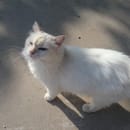A lot of people think they know what decades fashion looks like. There are plenty of misconceptions about what the fashion of the decade looked like (looking at you flappers). Looking back in time gives us a plethora of fun Halloween costume ideas that are fun to wear. There are many classic vintage style outfits perfect for Halloween.
This will double as reference for Halloween costumes and a general style guides for vintage fashion.
Vintagedancer.com is the main reference and the source of the pictures for this piece so thank you, Debbie.
- 1920s
-
1920’s
The first tip, you don’t know what a flapper looks like You might think you know what a flapper wears but your perspective is skewed I guarantee. Flappers do not wear short, tight, scoop neck dresses and rarely in red or black. The dress wouldn’t come above the knee unless you were a prostitute. No one wore fringe, I know shocker, beads, and embroidery was the ‘in’ trend. Flappers did not wear boas or feathered headbands. If you find an old picture like that it was either from a movie in the 50s or a prostitute.
Now, what was 20s fashion really? The popular fashion of the time was called ‘la garcon’, which translates to the boy but with the feminine article. What was popular below knee-length drop-waist dresses with a loose, straight fit.
Also popular were mary jane or t-strap heels, cocoon fur coats, cloche hats, short bobbed hairstyles, long pearl necklaces, drop earrings and small beaded purses.
The accessories make the style, it’s important that they match each other. Dinner party: long bead necklace, long gloves, headbands. Casual: cloche hat, handbag, cuff bracelet. Evening affair: drop earrings and cigarette holder. Summer tea party: sun hat, sunglasses, mesh gloves.
Makeup was a lot simpler in the 20s. You’ll need loose face powder in your skin tone (not translucent), liquid rouge – red (not pink or orange) and matte (not glitter), black or brown pencils for eyes and brows, matte red lipstick and matching pencil, black or brown mascara, and dark matte eyeshadow (black, green, or blue)
As cliche as flapper costumes are they do work for Downton Abbey, Miss Fitcher Murder Mysteries, Chicago, Modern Millie, and Great Gatsby. But besides that you can be a gangster, bootlegger, or mobster moll, Men’s wear can be turned into an Amelia Earhart costume. If you want to dress like someone would in the 20s try court jester, Pierrot clowns, and harlequins costumes. There was also the Egyptian revival so Cleopatra and Pharoah costumes were common.
- 1930s
-
The 30s are a largely forgotten in-between fashion period mostly taken up by the Great Depression. Because of the Great Depression, this period was the high point of Old Hollywood and the fashions that came with it.
Midi-length bias-cut dresses with puffy sleeves and belted waists were popular. The Old Hollywood gowns were often backless and sleeveless. High-waisted sailor pants and beach pajamas were worn outside. Accessories include slouch hats, knit berets, and fur collar winter coats with oxford shoes.
Makeup for the era was very much the Old Hollywood makeup in that most people couldn’t afford to wear it on a daily basis. A very light foundation with pink undertones would be ideal and rouge would be used sparingly if at all. The eyebrows of the 30s were super skinny and highly arched, I would recommend gluing them down and drawing over them to plucking them thin. Eyeliner was brown on the top and bottom of the eye and eyeshadow was only worn at night in blues, greens, and purples. Henna was used to lengthen eyelashes but just use a good mascara. Finish with overdrawn lips with a dramatic cupid’s bow.
Bonnie and Clyde are a classic gangster couple. Cartoons of Popeye, Olive Oly, and Betty Boop are costume classics for women. It was also the decade of the vintage horror film: Frankenstein, Bride of Frankenstein, Dr. Jekyll and Mr. Hyde, Dracula, The Mummy, and The Black Cat.
- 1940s
-
The 40s was a combination of hourglass silhouette a.k.a. ‘The New Look’ and practical clothes of women in the workforce.
Dresses were knee-length and A-line with puffed shoulders and patriotic colors. There are plaid A-line skirts worn with white button-up blouses. Victory suits and overalls were common for working women. Peep-toe heels, wedge sandals, headscarves, and flower clips, along with the debut of the two-piece bikini.
Makeup in the 40s was very different from the decades before and after it. The trick was to make no one think you were wearing makeup at all. The goal was to look elegant and sophisticated. You would wear very little foundation and powder and a rose-pink cream rouge (It was continually specified from multiple sources to use cream and not powder but I’m not sure why). For eyes, use a dark eyebrow pencil, matte eyeshadow only in the evenings, vaseline instead of mascara, and matte red lipstick.
There’s a lot of costume inspiration to work for in the 40s. There’s the pin-up girl/singer, nurse, Rosie the Riveter, Land Girl, or sailor. Classic superheroes like Wonder Woman and Agent Peggy Carter. It was also the year of Disney musicals like Sound of Music, Cinderella, Snow White, Wizard of Oz, and Who Framed Roger Rabbit.
- 1950s
-
When people think ‘dress retro’ they probably thought of the 50s. It was a mainstream fashion explosion with everything from rockabillies and pinups to poodle skirts and saddle shoes.
The 50s were tea length swing dresses with petticoats for the home and slim sheath dresses and tailored suits for work. Working-class women wore circle or pencil skirts and teenagers wore famous poodle skirts. What we now call ‘mom jeans’ were typical for the casual lady worn with peter pan collar blouses or cardigan sweaters. Saddle shoes and kitten heels for the feet and pearls for the neck. Other popular accessories were animal brooches, sweater clips, matching gloves and hat, and the infamous bullet bra.
In the 50s there was a dramatic change in the way society viewed makeup. There became a growing demand to follow trends and make sure your lipstick matched your eyeshadow (and purse and hat and gloves and shoes and house and car and washing machine. Sadly, I’m not joking). Working women spent more on money than teenagers and housewives in that decade.
Your foundation and powder should be a shade darker than your skin tone and tinted pink. The cream rouge should be light pink. For your eyes: your eyebrows should be darker than natural, brown or black eyeliner, eyeshadow that matches your outfit, and cake mascara. Lipstick should be red, pink, coral, or orange with a matte finish.
50s fashion was directed by teenagers. A poodle skirt and roller skates make a carhop waitress. An apron and house dress a typical housewife. It was a good year for Disney with Alice in Wonderland, Cruella de Vil, and Minnie Mouse as well as any lady from Greasers. Vintage Hollywood is also an option like Lucille Ball from I Love Lucy and the bombshell Marilyn Monroe (though I would recommend not going for the white dress, it’s overdone).
- 1960s
-
60s fashion was extreme all the way through. From Jackie Kennedy’s modesty to Twiggy’s ‘there’s no such thing as too short’. The 60s have something for everyone.
The fashion climate was insanely complicated in this decade so this’ll be a bit. Jackie Kennedy, Brigitte Bardot, and Mary Quant were fashion icons. The Youthquake movement made “Babydoll” clothing. Short shapeless shift dresses in bright colors and psychedelic swirls created the Mod look. Teens wore mini skirts and pencil skirts in plaid, stirrup pants, bell bottoms, low heel flats, vinyl shoes, tall socks in all colors, and pop art jewelry. Short bobbed hair and long straight hair were popular and baby hippies wore blue jeans and fringe.
The youthquake movement made the doll face in makeup. A doll face would be baby pink lips and exaggerated eyelashes were universally popular. Mods outlined eyelids, double-thick fake eyelashes, drawn on lower eyelashes, and eyeshadow that matches your dress. Hippies were the opposite of the overdrawn Mods and wore only brown mascara and clear lipgloss. For a universal look use a light flesh tone or sun-kissed powder or a liquid foundation, not both. This was when powder blushes became popular in rosy-pink or pale peach and a warm brown contour. Shimmery shades were mainstreamed in 1967. Eyeshadow is worn heavy in the colors pinkish-white, aqua blue, green, sky blue, or brown. Eyeliner should be thick and false lashes. Lipstick should be peach, berry, or light pink, outlined dark with a gloss on top. Eyebrows changed dramatically. Feathered and naturally arched in the early years, very thin and arched in the mid-years, or natural and bushy in the later years.
60s costumes are popular every year. There are hippie flower children, 60s gogo dancers, mod fashionistas, and boho festival-goers. Classic 60s television has inspired many Halloween goers with the members of the Addams Family or Audrey Hepburn in Breakfast at Tiffany’s.
Hopefully, this has given you some inspiration for some vintage style Halloween costumes.
Happy Haunting everyone.



